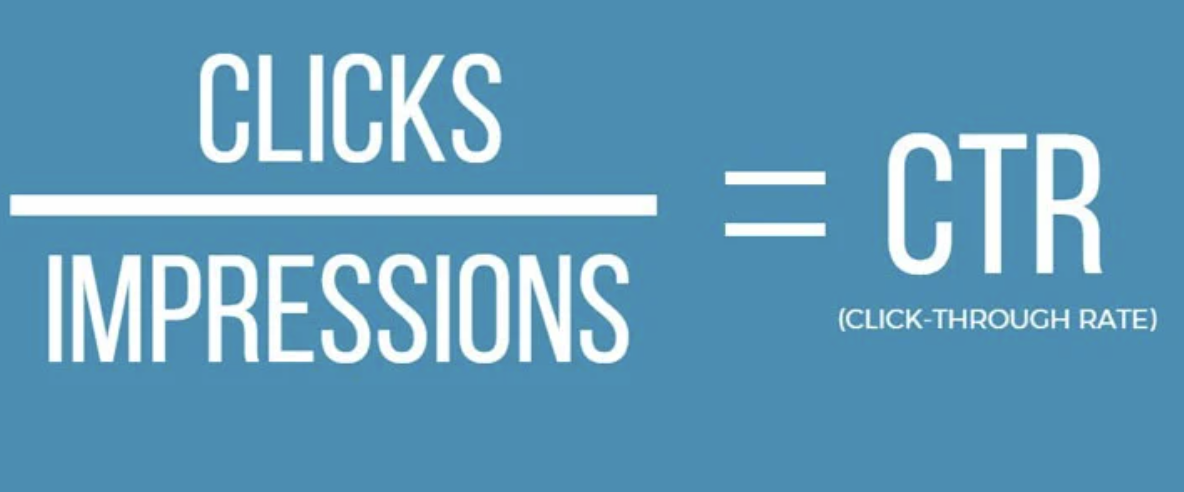Transform Your SEO Game with LinkDaddy CTR Manipulation Proficiency
Transform Your SEO Game with LinkDaddy CTR Manipulation Proficiency
Blog Article
Attaining Success With Targeted CTR Control
The optimization of click-through prices (CTR) is an important undertaking for brand names aiming to improve their digital existence and take full advantage of interaction. Targeted CTR manipulation encompasses a series of techniques, from data-driven advertisement placements to the advancement of compelling material tailored to certain target markets. Comprehending the nuances of customer behavior and using techniques such as A/B testing can substantially affect efficiency results. The journey to mastering these strategies is complex and requires a recurring commitment to evaluation and improvement. The question stays: what certain methods will produce one of the most considerable cause this vibrant landscape?
Understanding Click-Through Fees
Click-through prices (CTR) work as an important metric in electronic advertising, mirroring the efficiency of online material in driving individual involvement. This statistics is determined by splitting the variety of clicks an ad or link obtains by the total variety of impressions, revealed as a percentage (GMB CTR Manipulation). A greater CTR indicates that the content reverberates well with the target market, prompting them to do something about it
Comprehending CTR is crucial for marketers intending to enhance their campaigns. Different aspects affect CTR, consisting of ad placement, layout, and the importance of the material to the audience's passions. Compelling headlines and visually enticing pictures can substantially boost the possibility of customers clicking on a link.
In addition, the context in which the web content is offered plays an essential duty in establishing CTR. Inevitably, a detailed understanding of CTR equips online marketers to fine-tune their techniques, guaranteeing that digital projects accomplish their preferred results efficiently.
Value of CTR Adjustment
In the affordable landscape of digital advertising and marketing, the adjustment of click-through prices (CTR) has become a crucial strategy for boosting campaign efficiency. CTR serves as a key performance indication, reflecting the effectiveness of online promotions and material in bring in customer involvement. A greater CTR not just signifies better rate of interest yet also can lead to improved online search engine rankings and lower cost-per-click (CPC) rates, consequently enhancing total advertising and marketing budget plans.
The value of CTR adjustment hinges on its ability to notify marketing professionals about client preferences and habits. By evaluating CTR data, businesses can identify which aspects of their campaigns reverberate most with their target market. This understanding enables for even more informed decision-making and the allotment of resources to the most effective channels.
In addition, effective CTR manipulation promotes an affordable advantage. Brands that regularly accomplish higher CTRs can beat competitors, securing a more significant market visibility. In an era where consumer attention is short lived, capturing clicks equates straight to increased conversions and leads, ultimately driving service growth. Therefore, grasping CTR control is not simply helpful; it is crucial for achieving sustained success in digital advertising and marketing efforts.
Techniques for Targeted CTR
Accomplishing targeted click-through rates (CTR) calls for a calculated approach that includes numerous techniques tailored to certain audience sectors. One effective method is maximizing ad placements by using information analytics to determine high-performing channels. By concentrating efforts on these networks, marketing professionals can improve visibility and rise engagement.
One more critical method is crafting engaging headings and contacts us to click here to read action (CTAs) A/B testing various variations can expose which mixes reverberate most with the target market, thereby driving greater CTR. Additionally, integrating aesthetic elements such as attractive pictures or video clips can significantly boost appeal, making web content much more appealing and shareable.
Personalization likewise plays a crucial duty; utilizing user data to develop customized content can foster a sense of significance, urging clicks. Leveraging social evidence via endorsements and user-generated web content can build trust, eventually increasing CTR.
Studying User Behavior
 Understanding user actions is important for enhancing marketing strategies and improving overall performance. By examining exactly how users interact with content, online marketers can gain valuable insights right into preferences, motivations, and pain points. This expertise allows the advancement of even more targeted projects that reverberate with certain audience segments.
Understanding user actions is important for enhancing marketing strategies and improving overall performance. By examining exactly how users interact with content, online marketers can gain valuable insights right into preferences, motivations, and pain points. This expertise allows the advancement of even more targeted projects that reverberate with certain audience segments.To successfully analyze individual actions, numerous devices and methodologies can be utilized. Internet analytics systems give information on individual interaction metrics such as click-through prices, bounce prices, and time invested on web page. Heatmaps and session recordings allow marketing professionals to visualize user interactions, disclosing which elements draw in interest and which might be overlooked.
Furthermore, user comments with surveys and comments kinds can supply qualitative understandings, boosting the understanding of individual belief and complete satisfaction. Segmenting individuals based on interests, behaviors, and demographics can even more refine targeting efforts, tailoring content to fulfill diverse requirements.
Ultimately, continuous evaluation of customer actions is vital for adjusting marketing strategies in real-time. As user fads evolve, staying attuned to these modifications ensures that projects remain efficient and appropriate, fostering a deeper link with the target market. This foundational understanding sets the phase for the effective application of targeted CTR control techniques.
Gauging Success and Adjusting Techniques
Measuring her comment is here success in targeted advertising and marketing campaigns requires a critical strategy that integrates efficiency metrics with continuous analysis. Trick efficiency signs (KPIs) such as click-through prices (CTR), conversion rates, and consumer procurement expenses should be monitored constantly to gauge the performance of control strategies. By developing a standard, marketers can evaluate modifications in CTR and identify patterns that show successful interaction or prospective drawbacks.
Frequently analyzing these metrics allows for the timely change of approaches. As an example, if a certain campaign shows a significant decrease in CTR, it might signal the need for imaginative revisions or a reevaluation of targeting specifications. Utilizing A/B screening can even more refine techniques by click to investigate contrasting variants of advertisements or landing pages, supplying understanding into what resonates finest with the target market.
In addition, incorporating qualitative feedback through studies or user interviews can supplement quantitative information, providing a thorough view of audience perception. Ultimately, the capability to iteratively analyze and improve approaches based on real-time data fosters a much more receptive advertising and marketing approach, making certain that campaigns remain aligned with business objectives and target market choices. This flexible method is crucial in achieving sustained success in targeted CTR adjustment.
Verdict
Finally, targeted CTR control is necessary for enhancing digital marketing efforts. By recognizing click-through prices and employing strategic techniques, brand names can successfully enhance customer interaction and drive conversions. Continuous evaluation of user behavior and diligent dimension of performance signs help with prompt modifications, guaranteeing placement with customer preferences. Ultimately, effective CTR manipulation not just raises presence but additionally fosters trust fund and integrity, thereby contributing to sustained development in open markets.
 Targeted CTR adjustment includes an array of strategies, from data-driven ad placements to the development of engaging material customized to particular target markets.Click-through rates (CTR) offer as a critical statistics in digital advertising, showing the effectiveness of on-line material in driving user interaction. A higher CTR suggests that the material resonates well with the target audience, triggering them to take action.
Targeted CTR adjustment includes an array of strategies, from data-driven ad placements to the development of engaging material customized to particular target markets.Click-through rates (CTR) offer as a critical statistics in digital advertising, showing the effectiveness of on-line material in driving user interaction. A higher CTR suggests that the material resonates well with the target audience, triggering them to take action.CTR offers as an essential performance indicator, reflecting the performance of on the internet advertisements and material in attracting user interaction.In conclusion, targeted CTR control is vital for optimizing electronic advertising efforts.
Report this page